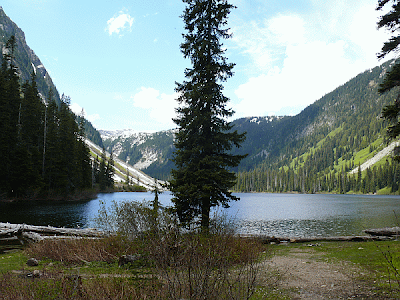I do realize my postings on this trip have been short and superficial, but keep in mind that I'm doing them in a motel room at the end of long days! I will write more about many of these sites later this summer.
Medicine Wheel is a really cool site. Here's a description:
The Bighorn Medicine Wheel is located in the Bighorn National Forest in north-central Wyoming, at an elevation of almost 10,000 feet on Medicine Mountain. Its elevation makes the medicine wheel inaccessible much of the year due to snow pack.
The wheel is made simply of locally gathered rocks. From a central cairn (pile of stones) of about 10 feet across and 2 feet high, 28 spokes radiate out to a rim of about 80 feet in diameter and 245 feet in circumference. Six smaller cairns are spaced along the rim.
The Bighorn Medicine Wheel is astronomically aligned: four of the outer cairns line up with the rising and setting sun of the summer solstice, and the others with the three bright stars that fade as the sun rises on summer mornings: Aldebaran, Rigel and Sirius. The 28 spokes are likely to correspond with the days of the lunar month.I'll write more about this site later since it's fascinating to me given my interest in archaeoastronomy.
We've been to Devils Tower a few times already, but we did stop again because the kids like seeing the prairie dogs. We also just spend a bit of time lounging on a rock in the ponderosa pine forest watching birds wheel over the top of the tower.





















































